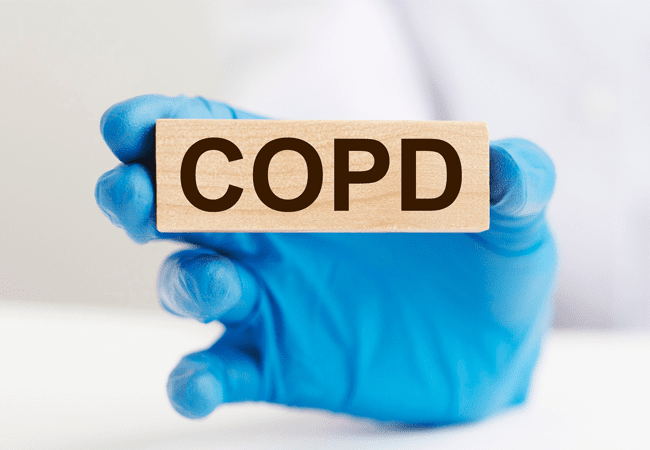Chronic Obstructive Pulmonary Disease (COPD) is a syndrome that affects the lungs, making it hard to breathe; it includes two main findings—emphysema and chronic bronchitis. This problem is so severe and common that affects millions of Americans; in fact, it is the 4th leading cause of death and the third most common cause of disability

Fortunately, some forms of COPD are preventable and/or treatable, thus, there are many important health organizations, like the National Heart, Lung and Blood Institute or the American Lung Association, that drive their efforts to educate patients to avoid or living with this condition, and also, invest in research.
November is COPD Awareness Month, and it is worth to check some of the advances that those organizations are making about this disease.
COPD research to improve lives
COPD research to improve lives
Since 1915, The American Lung Association has supported research that has been valuable to understand the body´s immune system to offer better treatments and management. Among their contributions we can mention:
Surfactant in babies´ lungs (1959). Dr. Mary Ellen Avery, an AML grantee, discovered that the lungs of babies with respiratory distress syndrome (RDS) lack the surfactant, a mixture of phospholipids and four surfactant proteins: hydrophilic SP-A and SP-D (collectins), and the lipophilic SP-B and SP-C. Lung surfactant are the responsible of lowering the surface tension to prevent the alveolar collapse during exhalation.
The gene that causes cystic fibrosis (1989). Dr. Michael Iannuzzi´s work help to discover that a defective gene was responsible of causing the body to produce abnormally thick mucus that clogs the lungs and makes the patient prone to dangerous infections.
The main gene of lung cancer (2008). Dr. Alan Fields identified a gene that may cause lung cancer. Besides. Dr. Fields discovered that the tumor growth in lung cancer could be inhibited using a combination therapy of auranofin (a drug approved to treat arthritis) and an experimental targeted agent.
The American Lung Association (ALA) founded the Airways Clinical Research Centers (ACRC) in 1999 to provide valuable information to help patients with asthma and COPD. Their aim is finding new ways to treat people with COPD asthma. Let´s mention a couple of those trials:
TRIM (Trial of Roflumilast in Asthma Management). The aim is to determine if the drug Roflumilast can be effective in the treatment of obese patients with asthma with poor disease control. The results will soon be published.
REACH (Resistant Airway Obstruction in Children). This trial observed airway obstruction in 582 children. The study showed that kids without a history of asthma had a lower post-BD FEV1% predicted (p = 0.008). Those without allergic rhinitis had lower post-BD FEV1% predicted (p = 0.003). On the other hand, children with no history of asthma, and those with asthma but no allergic rhinitis, had lower pulmonary function.
COPD is a national concern
COPD is a national concern
According to The National Heart, Lung and Blood Institute (NHLBI), more than 16 million Americans have been diagnosed with COPD, and millions more don’t know they suffer this condition. Furthermore, in 2020, the projected annual costs of patient-related care was $49 billion dollars. That´s is why the American Congress requested the NHLBI help to develop a plan to combat this problem; that´s how the National Action Plan was born.
Even tough, this document was released in 2017, it is continuously updated to make it adequate to the everchanging events and circumstances that are required in the war against COPD.
The Nation Action Plan states five main goals:
The Nation Action Plan states five main goals:
GOAL 1. Empower people with COPD, their families, and caregivers to recognize and reduce the burden of COPD.
GOAL 2. Improve the prevention, diagnosis, treatment, and management of COPD by
improving the quality of care delivered across the health care continuum.
GOAL 3. Collect, analyze, report, and disseminate COPD-related public health data that drive change and track progress.
GOAL 4 Increase and sustain research to better understand the prevention, pathogenesis, diagnosis, treatment, and management of COPD.
GOAL 5. Translate national policy, educational, and program recommendations into
research and public health care actions.
To combat this terrible disease it is necessary to have a united front. Fortunately, researchers, institutions, health educators, physicians and organizations are making joined and organized efforts that are changing the life quality of patients. We hope that some day COPD will be defeated.




